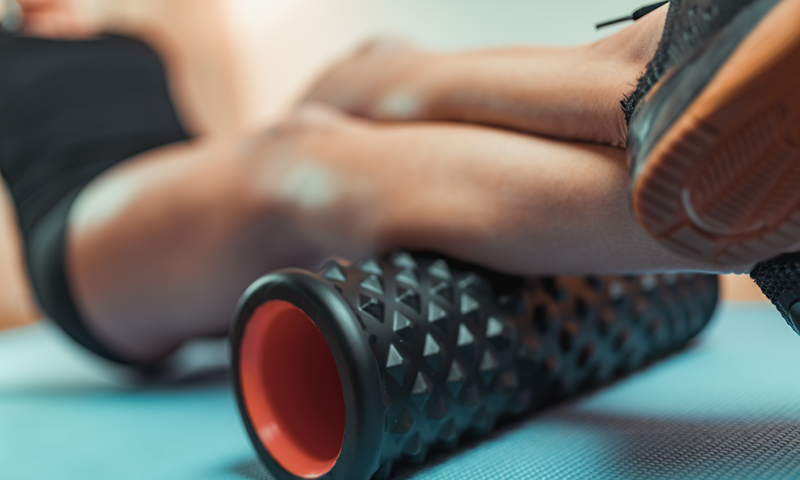
7 Yoga Poses That Are Harder Than They Look
February 13, 2020
Are You Moving Your Spine and Rib Cage Enough?
February 27, 202011 Dos and Don’ts of Coping with Soreness After Yoga

It’s normal to feel a little sore after hitting the yoga mat, particularly if you’re just getting back into it after a break or you’re practicing postures that you don’t usually do. After all, yoga feels so great because it deeply stretches the muscles that you don’t use in everyday life.
Depending on how deeply you’ve stretched, the soreness you’re experiencing may be delayed onset muscle soreness or DOMS. This normally occurs 12-48 hours after working out. The level of discomfort you feel will depend on how intensely you’re practicing, how frequently and what style you’re using, as well as your individual body. Even if you’re an experienced practitioner, you’ll probably experience DOMS from time to time. Although yoga is a low-impact exercise, it can still place a big strain on the muscles.
Thankfully, soreness after yoga is actually a good thing. Once your muscles recover, they’ll become bigger and stronger and your performance will improve. Of course, if you’re in a lot of pain see a health practitioner. However, for standard soreness, there are plenty of steps you can take to ease the discomfort. In this article, we explore the 11 dos and don’ts of coping with soreness after yoga.
1. Do Hydrate
If you’re experiencing soreness after yoga, remember to stay hydrated. Instead of drinking sports drinks, top-up on water throughout the day. You want to help increase the blood volume so that fluid can be easily distributed to the tissues to allow healing cells, transfer of nutrition and flushing out metabolic waste. The more hydrated you are, the easier this process will be.
2. Don’t Drink too Much Caffeine
Regardless of how intensely you practice yoga, you’re not depleting your body so much that you need energy drinks or caffeine. Consuming these products only adds unnecessary substances and calories to your body, when all it needs is TLC, hydration and rest.
3. Do Use Gentle Exercise
When your muscles are hurting, you may not feel like exercising. However, exercise is the best way to relieve DOMS. In fact, studies have shown that doing the same sequences you did before feeling sore – but in a gentler way – can help relax the muscles and give the joints and connective tissue a greater range of motion.
4. Do Use Foam Rolling
Foam rolling immediately after exercising can reduce muscle soreness, even if the process causes discomfort. If foam rolling is uncomfortable, take it slow. If you go too hard, you could end up making your soreness worse so listen to your body and be gentle.
5. Do Eat a Balanced Diet
If you’re experiencing soreness after yoga, try to eat a balanced diet. Make sure that your post-yoga meal includes protein, which builds and repairs muscle, and carbohydrates, which help speed up recovery.

6. Don’t Take Anti-Inflammatory Tablets
When your muscles are sore, you may be tempted to pop an aspirin to take the edge off. However, this is not the best way to speed up recovery. Your body deals with injury through inflammation, and DOMS is essentially a type of injury. To repair damaged tissue, inflammation is essential. If you use a drug to take away that inflammation, you’re halting your body’s natural healing process and delaying your recovery.
7. Do Get Plenty of Sleep
Without sleep, your body can’t power down and allow the parasympathetic nervous system to be in charge. If you don’t get enough sleep, the neuroendocrine system will not prime your body for repair and relief, causing the soreness to go on for longer.
8. Do Take a Hot Bath
If you’re experiencing soreness after yoga, there’s nothing better than a hot bath to ease your symptoms and speed up recovery. Not only does a hot bath feel great, but it also helps the parasympathetic nervous system to reduce tension and send the body into a state of healing.
9. Do Use Yoga
One of the best ways to cope with soreness after yoga is to continue to practice. Focus on the muscles that hurt and try to relieve tightness and tension from the area. When you’re feeling sore, you may want to avoid yoga and relax on the sofa instead; however, being inactive is a bad response to your discomfort, and is likely to cause you more pain in the long run. To avoid this, continue to practice yoga gently, even if it feels a little uncomfortable. Once everything gets moving the discomfort should subside.
10. Do Stretch Gently
Gentle stretching is a great way to ease soreness and discomfort. When you stretch, be sure to move through all planes of motion. This process will increase the range of motion and circulation, while also easing pain and chronic tension.
11. Don’t Stretch Intensely
While gentle stretching is great, avoid stretching intensely. Over-stretching sore muscles can harm the body, as the tissues are already slightly damaged and trying to heal. If you practice long, static stretches, you will essentially wring the muscles of their fluids and reduce the body’s ability to heal. In some cases, you may even damage the muscles in the process. To avoid this, stick to slow, gentle stretches that feel comfortable.
In Summary
So, there you have it – the 11 dos and don’ts of coping with soreness after yoga. If you’re experiencing DOMS, the best thing you can do is pack your yoga bag and head to the studio. Once your muscles are warmed up, the soreness should subside, and your body’s natural healing methods will kick in. After that, it won’t be long before you’re pain-free and even stronger than before.

